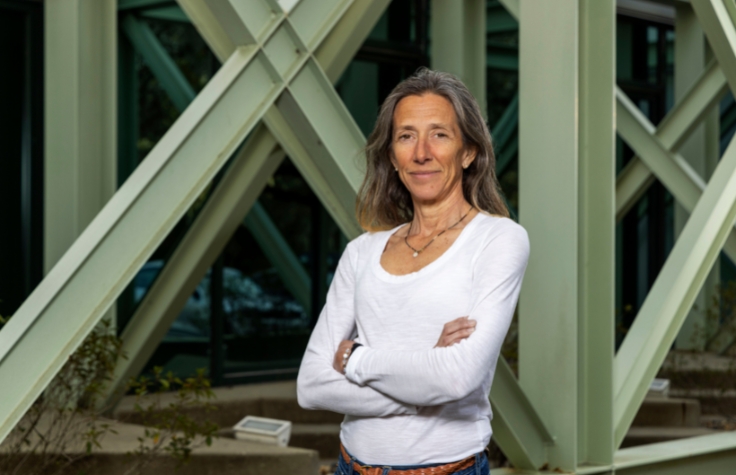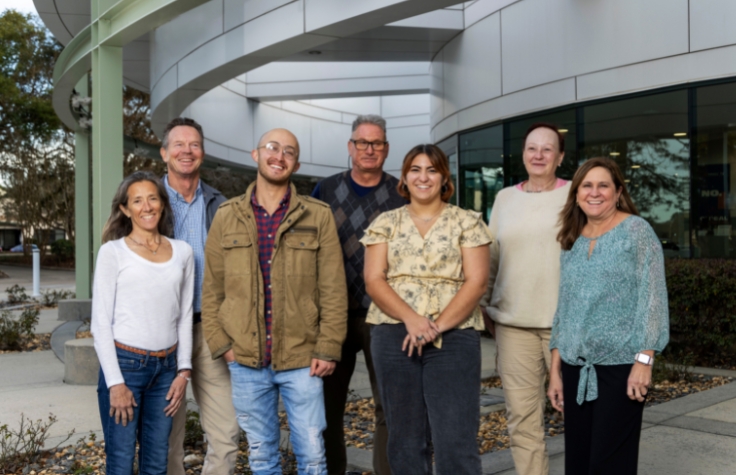
February 14, 2023
The Norwegian term for virgin snow, “nysnø”, seemed the appropriate inspiration to name Jennifer Johnston’s company, NysnoBio, as it underscores the pioneering work NysnoBio is doing to tap the potential of Parkin, the protein most often linked to young onset genetic Parkinson’s disease.
Johnston, co-founder and CEO, was the first to publish a high-resolution crystal structure showing critical features of how the Parkin protein works. Its activity is responsible for eliminating cellular stress and maintaining appropriate energy balance. Her scientific advisory board member, Dr. Nobutaka Hattori, was the genetic pioneer who identified the Parkin gene, which provides the instructions to make the Parkin protein. Without this gene and protein, cellular stress goes unchecked, leading to loss of cellular energy, chemical imbalance, and cellular death and disease.
“NysnoBio is focused on the most common cause of early-onset Parkinson’s disease,” Johnston says. “If you are missing this gene, it is 100 percent certain that you will get Parkinson’s disease before the age of 45.” Her team is seeking a therapy to replace the gene in people who are missing it, to arrest progression of the disease in patients.

Gene therapy all-stars
Johnston has studied the causes of early-onset Parkinson’s disease for over 20 years. She’s a long-standing member of The Michael J. Fox Foundation, and she directed the Parkinson’s program at Elan Pharmaceuticals before launching her own company.
NysnoBio is staffed with gene therapy and neurosurgery experts; when Johnston first approached industry and academic colleagues about joining her to explore gene therapy, they jumped aboard. “My team is a dream,” she says. “Most of them focused their lives on Parkinson’s disease, early-onset patients, and making therapeutics; and are now providing their expertise on topics as diverse as neurosurgery, human genetics, and manufacturing for complicated biologic protein therapeutics like gene therapies. Our approach is to directly deliver the normal Parkin gene to the area of the brain that, for those with Parkinson’s disease, is dying. It’s a very simple, straightforward, and pragmatic approach, and while no one has done this before, my team probably has the most experience in this form of the disease.”
While working with an academic group, Johnston was awarded a three-year grant from Aligning Sciences Across Parkinson’s (ASAP), an initiative supported by the Sergey Brin Family Foundation in collaboration with The Michael J. Fox Foundation. The grant is funding research into the possibility of using transplanted brain cells from a healthy person to cure a patient with Parkinson’s disease.
No mutation is alike
In their studies, the NysnoBio team sought to go beyond the usual process of collecting cells from patients, analyzing them, and—with any luck—reaching a big conclusion about the cohort for a published paper.
“The challenge for these types of studies,” Johnston says, “is that when you get cells from different individuals who may all share a common Parkinson’s mutation, they could have vast differences in mutations across the rest of their genome. While Parkin is the most common early-onset genetic mutation, there are more than 15 genes that can lead to Parkinson’s disease. Parkin is 100% penetrant, which means if you have mutations in Parkin it is 100% certain you will get the disease. For other genetic mutations, that is not the case; other dominant mutations are “incomplete penetrance,” meaning other genetic factors strongly influence whether someone will actually get the disease at all, and whether they get it early in life or during old age.
“For our ASAP project, we are studying all genetic forms of Parkinson’s disease—both penetrant and incompletely penetrant mutations. So when we get cells from a patient who has an incomplete penetrance genetic form, we cannot make any conclusions about how those cells behave until we have a complete whole-genome sequence (WGS) from those cells, because we need to understand the influence of the ‘background mutations’ before we can attribute any cellular effects to a Parkinson’s disease mutation. For the 100% penetrant genes, like Parkin, the background is not as important, but we still want to make sure we capture that WGS information.”
Studying cell behavior requires an understanding of the entire genome, and Johnston cautions against making assumptions about a mutation based on any single behavior it exhibits. “If I get 10 samples of one mutation from 10 different patients, they’re all going to have different genetic backgrounds; they may behave differently. We’re trying to use the sequencing power that Illumina brings to light so we can understand the whole genome of all our samples—why some behave the same, and some behave differently.”
Many research groups are already working with induced pluripotent stem cells (iPSCs) to develop models of Parkinson’s disease, yet each group has its own patient-derived cell lines and utilizes genetic manipulations and programming techniques which may unknowingly alter the genome. When one compares these cell lines, the phenotypic data is inconsistent between them.
NysnoBio is an early adopter of Illumina Connected Analytics bioinformatics platform and Cohorts, a module in Connected Analytics for rapidly building and exploring study cohorts. This tool helps them aggregate cell line genomic and phenotypic data. It also provides analytics for whole-genome sequencing data, which they can use to identify genetic variants, and in turn distinguish between different disease subtypes.
“What’s really unique and amazing about Illumina Connected Analytics and Cohorts is that it’s going to allow us to bring together all the data that people are generating from these human cells from patients with Parkinson’s disease,” Johnston says. “We’ll be able to understand their genetic background in a comprehensive way that we never have before. Add in machine learning, and we’ll be able to look for patterns in our data and in the genes.”
The ability to obtain precise genetic information has helped Johnston before. While working on a project to understand the role of the Parkin protein in suppressing cancer, she frequently relied on two extensive databases of cancer cells studied with WGS—canSAR in the UK, and The Cancer Genome Atlas (TCGA) in the US—which allowed her to determine which cells she wanted to use for her experiments. “I thought, ‘We definitely need to do this for Parkinson’s disease. It’s so powerful, it saves so much time, and it unifies the field.’” Johnston says.
Once NysnoBio’s grant from ASAP is complete, Johnston hopes their findings will become a powerful resource (like canSAR or TCGA) to share with the Parkinson’s disease community. “It can help us to compare and contrast the experimental effects of people who were previously lumped into one genotype,” she says. “We can understand how additional mutations in each person’s genome impact the presence of the Parkinson’s disease manifestations—leading to a more personalized medicine.
“I think it’s also going to be a way to bring researchers together, because it’s not everyone just in their lab by themselves with their cells,” she says. “Soon, they can put their information in this interactive database—and those are things no one’s ever been able to do before. So I’m very excited about the capability of Cohorts to help us understand our data better.”

Pattern recognition
“The challenge for neuroscience therapeutic development is that it’s unlike cancer—you can’t take a biopsy. So how do you know something’s working?” Johnston says. Today, the NysnoBio team is working on a neural network imaging study in Parkinson’s patients. “When you use glucose in the brain, you can use imaging technology to see which neurons are using the glucose,” Johnston says. “In healthy patients, they use groups of neurons in one way; and in Parkinson’s patients, the brain must enlist alternative groups of neurons to maintain function after neurons are lost in disease. In studying our early-onset patients, we can determine these alternative patterns. The goal for our therapeutic in development is that we’ll be able to restore the alternative pattern back to normal.
Before a patient is enrolled in a clinical study, the NysnoBio team can have that patient’s genome sequenced, assess whether they have the specific Parkinson’s mutation, and determine background mutations that may influence how the patient will respond to therapy. Having the WGS data helps the team identify genetic factors that can influence patient phenotype: How does their disease look? How fast does it progress? And how well do they respond to the therapy? The answers—and perhaps the cure—are waiting in our cells.
More on Parkinson’s in our genomics research hub: Using DRAGEN for Gaucher and Parkinson disease research: resolving GBA1 variants using PCR-free whole-genome sequencing.


